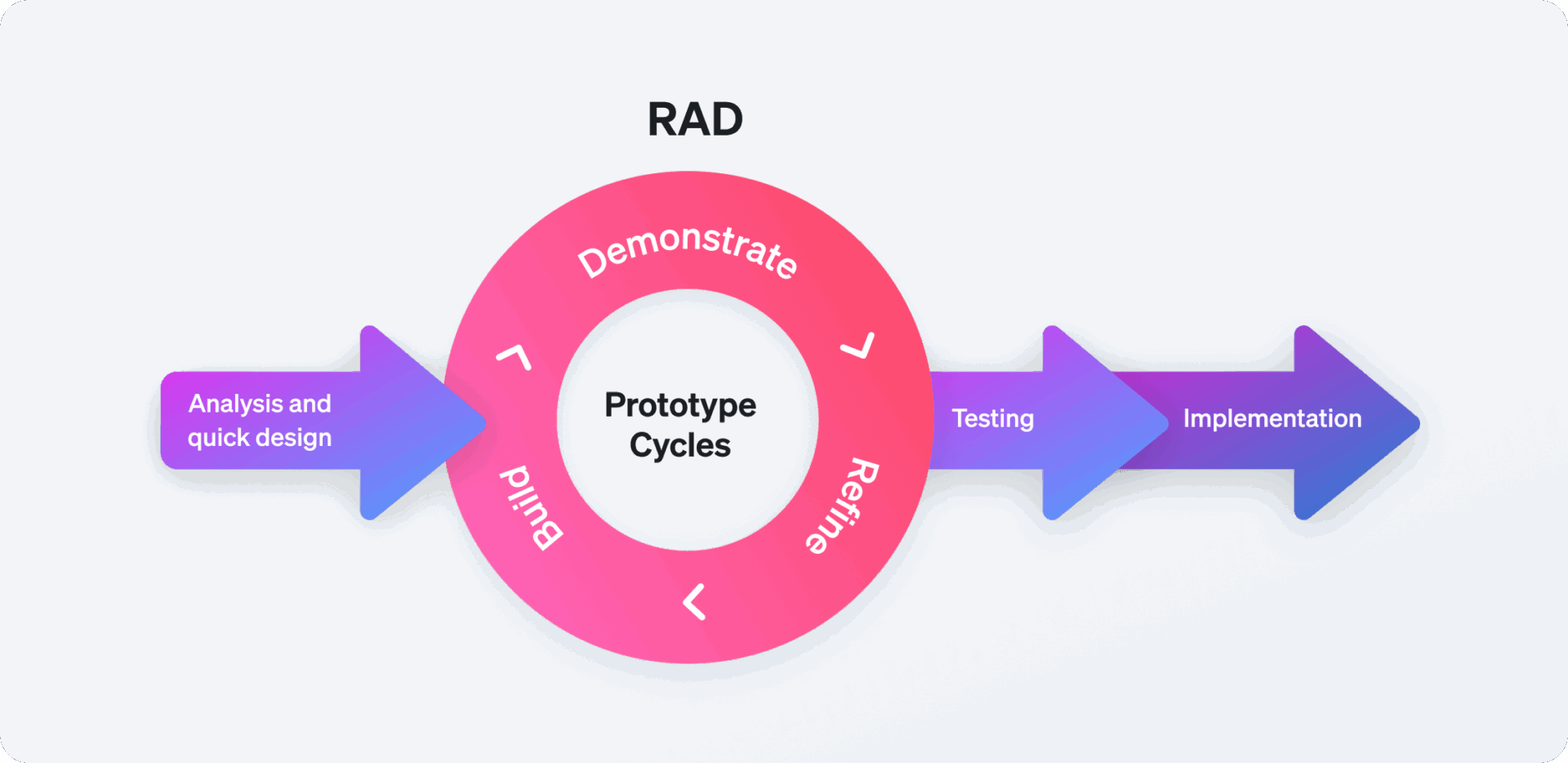
Agile is an iterative software development methodology that has rapidly spread into many organizations due to the range of benefits it provides. The State of Agile reports that 75% of the companies adopt agile because of the accelerated software delivery, while 55% stated increased productivity as the main reason for adopting it.
Today, various agile methods are being used around the globe, each with its own distinctive features. In this article, we list twelve of the most effective agile software development methods, how they work, its advantages & disadvantages, and why software developers would use one method over the others.
Agile is a software project management methodology that takes an iterative and incremental approach for continuously developing and delivering software into the market. Unlike in the waterfall approach, where developers ship the whole product in one go, agile methodology promotes delivering small pieces of software at each iteration. It enables organizations to ship high-quality features to the customer faster. Agile teams continuously evaluate the project plan, requirements and results, making them highly adaptable for changes.
There are many reasons software companies embrace agile methodologies. Agile teams work in a customer-centric manner; thus, organizations use them to get high customer satisfaction. Also, agile lets organizations have a higher software development velocity and ship software faster to the customers making revenue generation a speedier process.
Agile enables better control over the project and promotes the quality of the software at the beginning of the process to ensure the delivery of high-quality software. This continuous evaluation and delivery process reduces the risks associated with projects. There are methods to identify risks within agile and mitigate plans to avoid project failures.

The scrum method consists of teams that work in iterative development cycles known as ‘sprints’ which last for two weeks. Scrum teams conduct the ‘daily scrum’ meeting for 15 minutes each day. Usually, the project manager leads it, and team members discuss the progress of each of their planned work, any blockers, and mitigation plans to remove them.
Scrum provides transparency to the teams, enabling each member to know what others are doing. It helps identify the risks and blockers in advance and mitigate them as early as possible to flow the committed work in sprints smoothly. However, such project work segmentation that focuses only on a set of work can sometimes lead team members to lose track of the complete project.

Unlike other agile methodologies, Kanban methodology tracks work progress in a ‘Kanban board’ with columns having task cards in different progress states such as work to-do, in-progress, and completed. The state of the table changes when task progress changes. When you add a new piece of work into the table, you would create a new card for it in the Kanban board.
Software companies mainly use this method because Kanban is simple and easy. It allows the teams to see work progress visually, focusing on each development cycle and measuring the time required for each task to the next stage. Its disadvantages include its lack of timeframes, the inability to predict task completion and unsuitability for dynamic teams.

Source: BenchmarkSixsigma
Scrumban is a hybrid of scrum and kanban methods. Similar to Scrum, Scrumban consists of sprints of 2 weeks and, similar to a Kanban board, it visualizes the project on a Scrumban board that has more visual information. Scrumban planning occurs in an on-demand fashion, and new work is triggered when tasks go to the “To-Do” section. During the planning, usually, task prioritization occurs, and the tasks are added to the Scrumban board with priority marked.
Organizations choose this method for several reasons, one reason being letting teams break down work into bite-sized chunks. The visualization enhances the transparency of work and identifies blockers. Nonetheless, as it is a relatively new method, there is less documentation about its processes. Also, it is difficult to track and monitor as the team decides on what to work on.

Source: Appinventiv
Lean Development was created by Toyota, which came from Lean Manufacturing and is applied to software development. It focuses on development time and resource optimization, minimizing waste. This method is also known as the Minimum Viable Product (MVP) method, where the team releases a bare-minimum version of a product to the customer. Then, based on the feedback, they will release new features and enhancements in the project’s next phases.
The LSD helps software development companies to reduce costs by eliminating waste. It encourages development teams to make their own decisions. Also, it enables releasing software in a shorter period. One of the disadvantages of LSD includes its dependency on teams. Because of that, it is less flexible for scalability than other frameworks. Another disadvantage includes the requirements for strong documentation, and the inability to do so can cause mistakes in development.
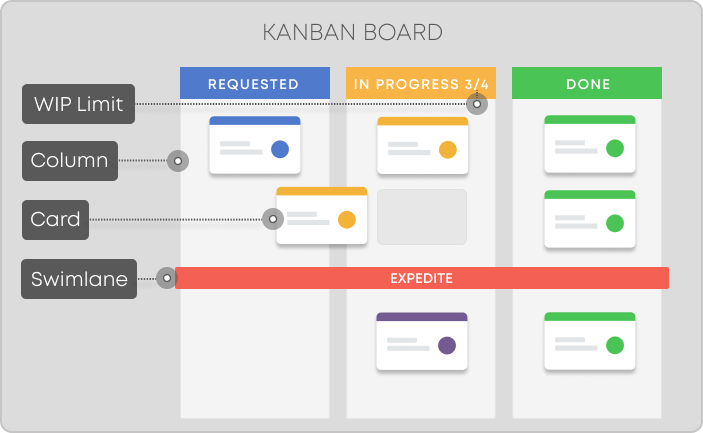
Source: Businessmap
Based on Kanban methodology, a kanban board consists of different components, including columns, work-in-progress limits (WIPs), cards, a commitment point, and a delivery point based on Kanban methodology.
The column shows the “workflow” of the project, and each column contains cards that represent a specific task. The columns in the Kanban board can be “To Do,” “In Progress,” “Complete,” or a complex set of columns. Cards progress through each column until they flow to the ‘completed’ column. WIP limits indicate the maximum number of cards in a column at a given time. For example, if WIP is 3, that column cannot contain more than three cards at a time.
Kanban board provides a visual idea of how the project workflows. It lets the team focus on the currently planned work and track progress in real-time. It enhances the productivity and efficiency of the kanban teams.
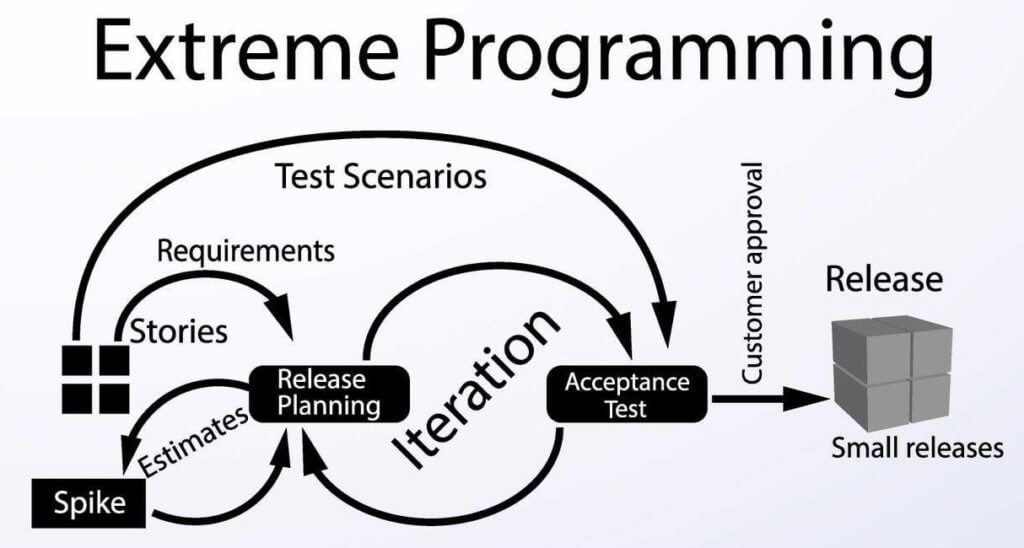
Source: Digite
The XP method aims to improve the software product’s quality and increase the responsiveness to varying customer needs. It works based on five values: communication, simplicity, feedback, courage, and respect. There are several practices of XP methodology. Developers sit together and program in pairs, code review, or unit testing. XP uses user stories to describe the customer’s needs allowing developers to understand the end product easily. There are weekly cycles in XP where the team discusses progress on the first day of the week, and quarterly cycles for releases.
Since it uses pair programming and testing, it helps to minimize code errors and enhance the software quality. This helps deliver a stable product to the market. However, it can be disadvantageous in terms of customer point-of-view as they need to keep involved in the process.
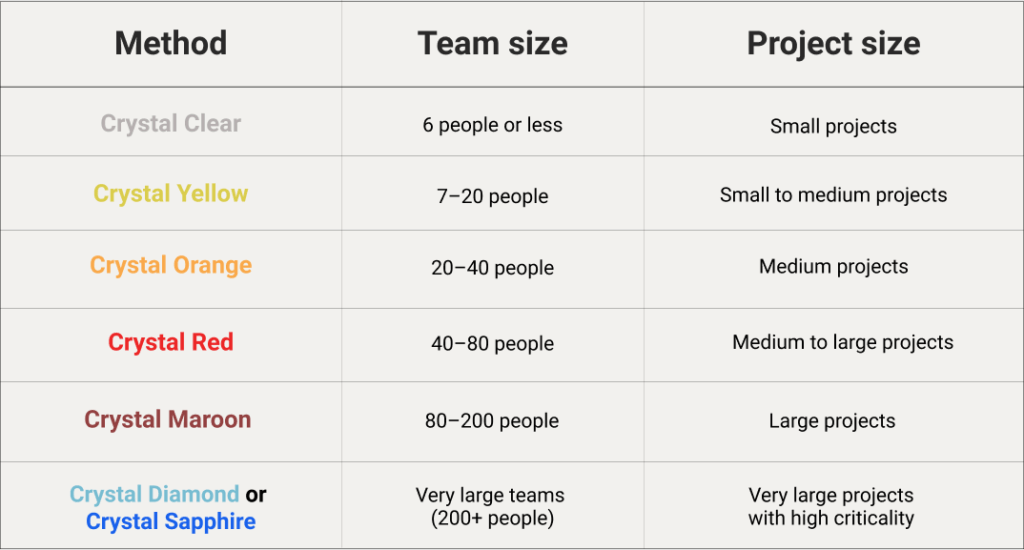
Source: Wrike
Crystal methodology is considered a lightweight and flexible method for software development. There are many variants of Crystal methodology, such as Crystal Clear, Crystal Yellow, Crystal Orange, and Crystal Red which differ based on the number of members in the team. Teams in crystal teams work on their preferred work, which promotes flexibility. The project teams do not have to stick to specific and fixed tools, and they can be dynamic and unique with their own set of tools.
The crystal method enables faster and regular software delivery and promotes osmotic communication for information flow among team members. Also, members who work on crystal teams have a lot of autonomy and often feel a sense of safety. However, this method may not work on remote teams as there is no clear knowledge sharing, and a lack of structure can negatively impact relatively new teams.
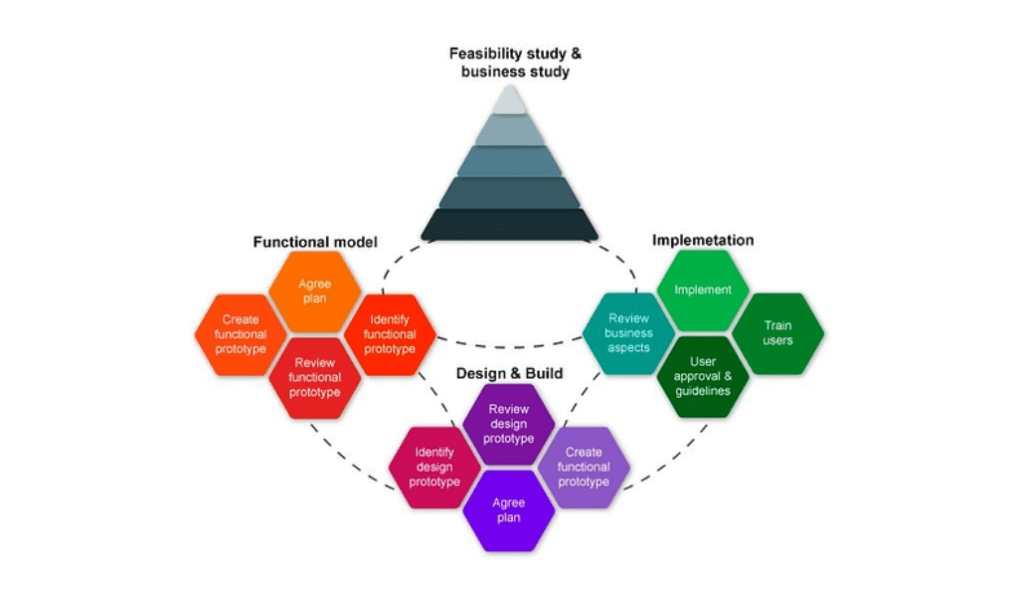
Source: NewlineTech
The DSDM is another incremental and iterative approach to software development and improvements done based on customer feedback. It was invented in 1994 when developers used the Rapid Application Development (RAD) method. DSDM includes more governance and strict guidelines than RAD.
Strengths of DSDM include rapid product delivery, reliability, and ability to complete the development on time. Weaknesses of DSDM include higher costs involved in its implementation, the possibility of sudden changes to the organizational culture, and the inability to implement it in smaller organizations.
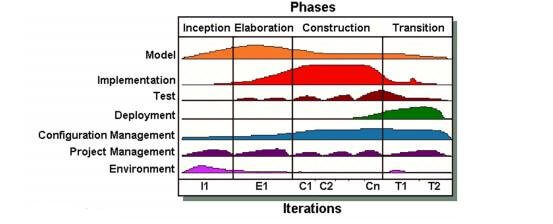
Source: ResearchGate
The UP is another iterative and incremental software development method containing several components and variations. For example, Rational Unified Process (RUP) and the Open Unified Process (OpenUP). It is an architecture-centric and risk-focused methodology. There are five phases of a UP: Inception where communication and planning happen, Elaboration for planning and modeling, Construction phase for project development and completion, Transition where teams release the final product to the customer, and production phase for maintaining the product.
The UP method enables accommodating changing customer and project requirements. Having clearly defined phases lets developers easily track progress. As it is risk-focused, it allows you to identify the risks of the next iterations and develop early mitigation plans. However, this process can be difficult to manage and implement.
.

Source: NIXUnited
RAD is more of an adaptive software development method than other agile methods discussed above. In simple terms, RAD focuses less on planning and more on development. This method often uses Prototypes for development designs. RAD is generally used when building user interfaces. There are several other approaches for RAD, such as agile, spiral, and unified approaches.
Companies use RAD to get better quality for the software they develop as they use prototypes to interact with the product. Another key advantage is its risk control enabling teams to identify risks as early as possible. Disadvantages include lack of focus for non-functional requirements, risks in its initial implementation, and poor scalability.
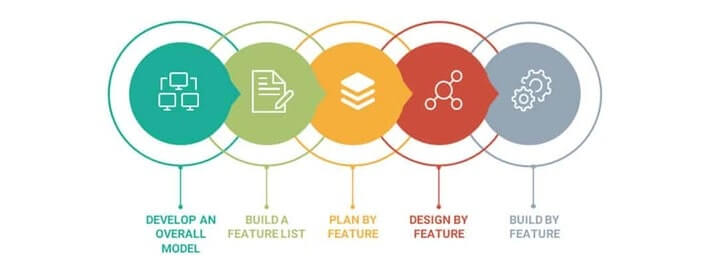
Source: Aist Global
FDD is a lightweight, iterative, and incremental software development process that focuses on software features. In FD, there are five steps for software development: developing an overall model, building a feature list, planning features, designing a feature, and building features. For tracking purposes, teams mark milestones for each feature they develop.
FDD makes application development more rapid and enables larger teams for continuous delivery of software features. However, it is not effective for smaller projects. Also, this process lacks proper documentation. Thus, there can be confusion about its core concepts.
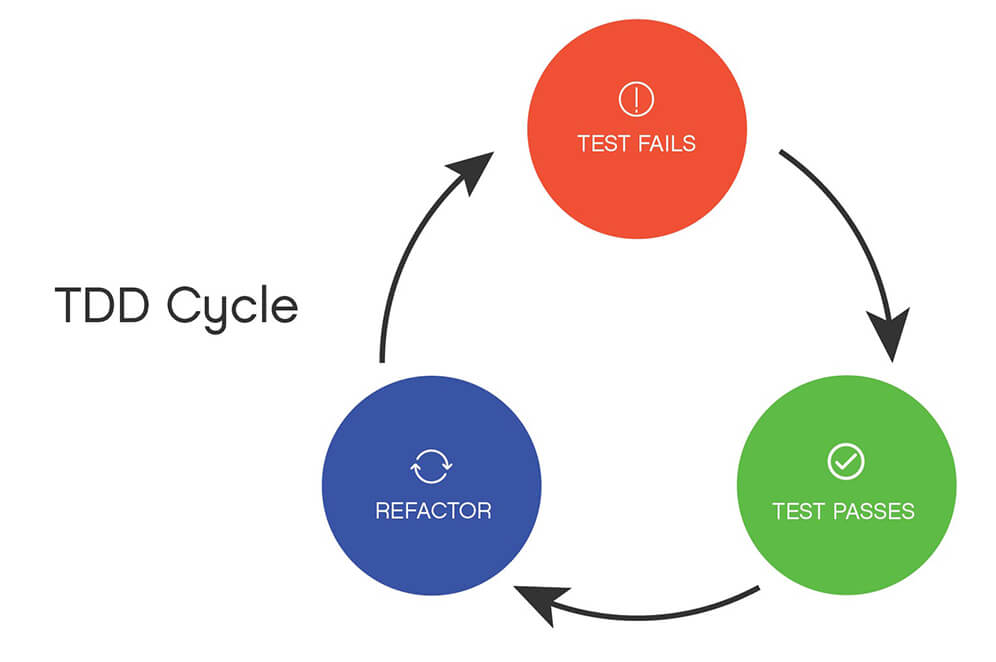
Source: Ippon
Out of all the agile methods discussed above, TDD has quite distinct features. Teams convert their requirements into test cases before a software product is completed in this approach. Then while developing the software, they track the software’s functionality against the test cases they developed earlier. To move forward with the next phases of the development, the software needs to pass the test cases.
TDD focuses on software quality in its early phases. Thus, it enables producing high-quality software to the market. Also, it lets programmers develop more modularized and extensible code. In addition, it allows developers to take small steps whenever they require. However, it will not work well in some situations, such as when the software requires complete functional tests. Also, unit tests created by developers can often lead to blind spots.
Agile methodology allows organizations to develop software faster with higher quality, meeting customer expectations. More importantly, it provides better control over software projects, and its continuous evaluation and delivery process reduces the risks associated with projects. There are several Agile methodologies that can be used, depending on the needs of your company and software development team.
Improving productivity in software development teams is a key driver of success. Tabnine provides an AI-based code completion tool that works with any language, from concept through to completion. This enables teams to write code faster and more easily, regardless of which Agile methodology they use.